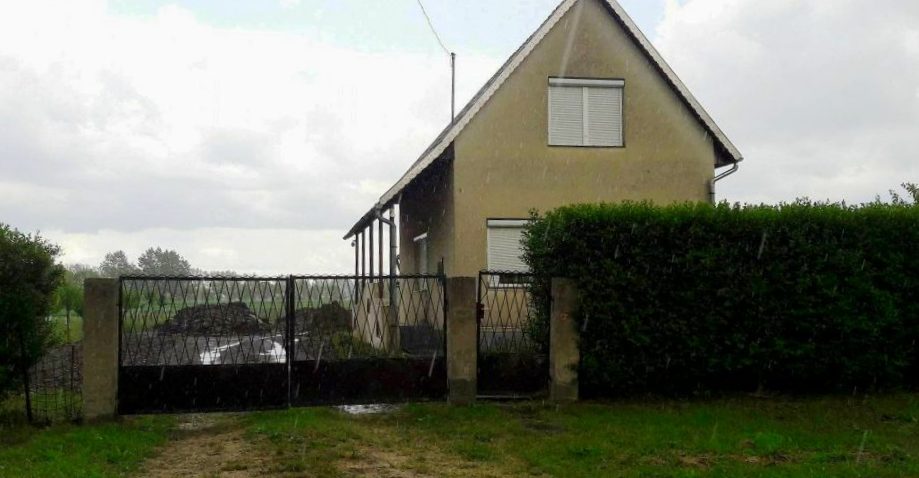The https://english.atlatszo.hu use cookies to track and profile customers such as action tags and pixel tracking on our website to assist our marketing. On our website we use technical, analytical, marketing and preference cookies. These are necessary for our site to work properly and to give us inforamation about how our site is used. See Cookies Policy
Phantom residents are voting and collecting pensions near the border with Ukraine
There is a two-bedroom house at the edge of Kisar, near Hungary’s border with Ukraine. The house looks like nothing out of the ordinary, but, according to the official registry, more than a hundred people are living there. When we visited the village, locals said that they have never seen any of the 110 ’residents’ in the house.
There are many small towns and villages in an electoral constituency in Eastern Hungary, near the border, where the number of residents increased unusually – despite the fact that the population of Hungary is decreasing and the number of voters dropped by 1.2% nationwide in the past four years. The center of the special constituency (No. 4 of Szabolcs-Szatmár-Bereg County) is Vásárosnamény. We went there to examine who the new voters are.

Kisar, Szabolcs-Szatmár-Bereg County. According to the official registry, more than 100 people live in this house. Photo: András Becker / Atlatszo.hu
Wherever we went, locals said that there were a high number of residents who were registered in the village who did not actually live there. In one village, we were told that about 600 people live there, but the official registry had more than a thousand residents listed.
Who are these phantom residents? Locals say that they live in Ukraine, across the border, and they come over to Hungary for two reasons: to collect their state pension, and to vote. Most of these people were given Hungarian passports recently, after Hungary granted citizenship to ethnic Hungarians outside its borders.
The phantom residents of Eastern Hungary were put into the limelight after the elections because the investigative show of HírTV channel managed to prove that on the day of the election there was an organized effort to transport people from Ukraine to Hungary so that they were able to vote.
Atlatszo examined voting registries and results in the area to determine whether these people could influence the outcome of the election. We found that the increase in the voting population was the largest in the Vásárosnamény electoral district and went there to investigate.
Collecting pensions for clients in Ukraine
Tensions about the phantom residents run high every month on the day when the state pensions are sent to senior residents. Ever since the new residents have been registered, the postman carries so much money in his bag that he must be accompanied by an armed security guard, residents in the village of Kisar told Atlatszo.
’We used to work at the collective farm, so our pension is not higher than 60-70 thousand forints. But the Ukrainians get at least 200 thousand and some of them get as much as 300 thousand,’ a local man claimed.
Most of the phantom residents do not collect their pensions themselves. Locals describe scenes where there is a long line in front of the village’s ATM machine on the day when the state transfers pensions to bank accounts to those who do not want to get it from the postman in cash.
The long line is formed because there is one person at the machine holding a sheet of paper with names and several debit cards, withdrawing money – collecting pensions for their clients. Sometimes this person empties the machine, so locals cannot withdraw their money that day.
Locals also told us that there are a few new residents who actually live in their new homes. They buy real estate and they also fill job vacancies in the area. However, they are reportedly the exception to the rule.
Did phantom residents vote in the election?
From the voting data we cannot tell whether there were groups of ’phantom residents’ who travelled to Hungary from Ukraine to vote on the day of the election. However, we can see that the number of voters in the area increased and that it was the Fidesz candidate who benefitted from the difference.
We looked at the numbers in Constituency 4 of Szabolcs-Szatmár-Bereg County. There were a dozen polling stations where the total number of people registered to vote increased from 8400 to 10300 since 2014. In these polling stations, there were about one thousand more votes cast for Fidesz candidate Attila Tilki in 2018 than four years ago.
One good example for this is the village of Lónya, where the number of voters went up from 671 to 811 in four years. There were 424 votes cast altogether in this village, and Tilki got about a 100 more votes than he did four years ago. Other candidates were not able to improve their results compared to four years ago.
We do not know who the new voters are, but we saw lists of voters from polling stations with suspicious names and addresses.
In one village, for example, there are 37 people living in one house according to the official registry. Most of them have names that sound Slavic, not Hungarian: we saw many Sergeis, Vyacheslavs, Darias and Nastasyas on the list.
The story by HírTv’s investigative show, Célpont, proved that voters were transported to Hungary from Ukraine in an organized manner on the day of the election. However, nobody saw them turn up in polling stations in big groups.
According to our local sources, this was done according to previous instructions: voters from across the border were not allowed to appear in groups in polling stations.
Votes in return for pensions
What’s in it for the voters making the trip across the border? First, let’s look at key figures in our story.
It is important to know that Fidesz has no network of volunteers in small villages. Instead of them, local mayors do the work of organizing and mobilizing. They get requests or orders from the MP of their region, and they are obliged to follow those orders.
These regions are usually poor and their only chance to stay above the water is to apply for grants – and decisions on those regional grants are made by the MPs. If mayors want money for their villages, they need to comply with the requests of the Fidesz MP’s.
Other key players in this story are the phantom residents. By having a Hungarian passport and an address registered, senior people can collect a Hungarian state pension.
The fact that they do not actually live in Hungary should disqualify them, but it seems that nobody cares about that. Mayors and town clerks do not delete them from resident rosters and the social security administration is continually delivering pensions to addresses where 6-8 people supposedly live in one small house.
Phantom residents get their Hungarian state pensions, and all authorities overlook the fact that they do not actually live in Hungary.
Local residents said that there is political will behind what is happening, and they said that they expect this system to stay in place as long as the ’phantom residents’ are willing to cross the border on election day. Next year, Hungary is going to have municipal elections.
’I am not going to vote in any elections any more’ a local man said in one village. ’There is no point, the Ukrainians are going to decide who is going to be mayor.’
Data: this is why Vásárosnamény is special
Hungary’s population is declining: the number of people with the right to vote inside the borders (not counting Hungarian citizens outside the borders who can cast a mail ballot) decreased by 144 thousand between 2014 and 2018.
Yet, there is one voting constituency where there was a seemingly miraculous increase in voters. Taking into account death and migration, our estimate is that since 2010 at least ten thousand new voters appeared in the constituency near the Hungarian-Ukrainian border.
In only the past four years the number of voters in Vásárosnamény district increased by 3933: from 73242 to 77175. It does seem miraculous: in Debrecen, a nearby urban centre attracting domestic migrants and workers, the number of voters decreased by nearly two thousand.
We created four data visualizations to show you where the increase in voters took place in the region. The source of the data is the National Election Office.
In the first graphic, on the left, you can see which towns and villages registered the highest number of new voters since 2014. On the right, you can see which towns or villages registered the highest number of new voters in proportion to the number of their residents in 2014. The data covers the entire country, and the towns marked with orange are in Constituency 4 of Szabolcs-Szatmár-Bereg county – the area we are focusing on.
In the next infographic we zoom into Constituency 4 of Szabolcs-Szatmár-Bereg county. The first graphic shows you the numbers: this is the change in the number of voters since 2014. Orange shows an increase while blue shows a decrease in the number of voters. In the right you see a map of the towns and villages that showed the biggest increase in the number of voters.
The third infographic shows you the proportions: the size of the circle tells you how much the voting population increased compared to four years ago. Vásárosnamény saw an increase of 5.4 percent while the national average dropped 1.2 percent in the number of voters. Orange shows an increase and blue shows a decrease in the number of voters.
Data visualization: Attila Bátorfy
Text: András Becker
English version by Anita Kőműves, editing by Clare Humphreys.
You can read the original, Hungarian-language story here.
[sharedcontent slug=”hirdetes-english”]





